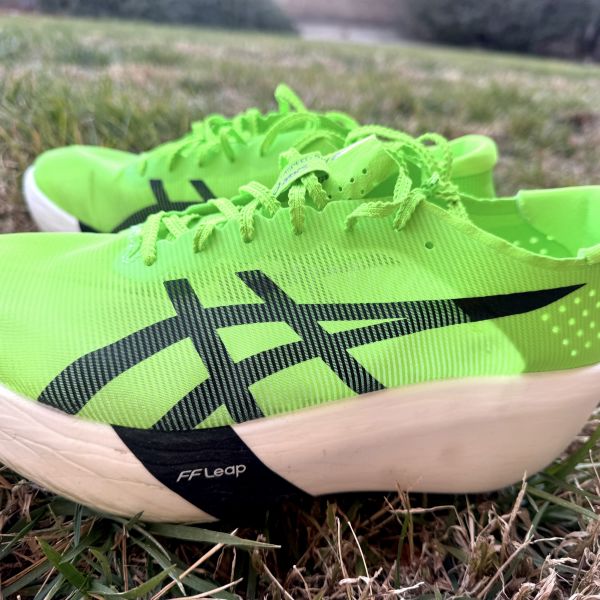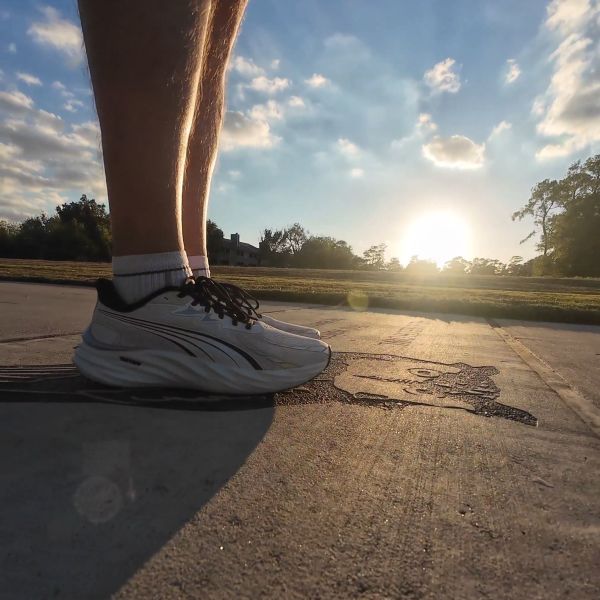Wondering how to train smarter to get faster, improve recovery, and run more efficiently? Check out this guide to heart rate training for runners...
You may have come across buzzwords like:
Or maybe you’ve noticed one of your favorite athletes sporting an armband heart rate monitor at the Olympic trials or crossing the finish line at the Boston Marathon.
.
Yes?
.
The use of heart rate for training is no longer limited to elite runners—it has gained popularity among influencers on social media and casual runners alike.
.
💓With heart rate monitors becoming more accessible, affordable, and accurate, any runner can choose to incorporate heart rate training into their routine.
.
👉But is it the right choice for you?
In this article, we will delve into the world of heart rate training for runners.
.
We'll explore:
Ready to learn how to run smarter, not harder with heart rate training?
Simply put, heart rate training is:
✅By targeting the different heart rate zones in the appropriate way in training, you can become more efficient and able to move faster for longer–exactly what every runner wants!
.
Heart rate training contrasts with other methods like using Rate of Perceived Exertion (RPE) in that it offers objective rather than subjective data.
.
📉As a result, heart rate training makes it easy to track progress over time.
💓By monitoring your heart rate during training, you’re able to better understand how much stress you’re putting on your body while running.
🔥Heart rate also relates to what fuel your body is using as its primary source of fuel during exercise.
That's why we should fuel with carbohydrates during longer races. Monitoring heart rate helps you understand and explore the most suitable effort zones for your running goals.
.
While these reasons for tracking heart rate are compelling for many athletes, the approach is not necessarily for everyone.
✅Heart rate training might be a good fit for you if…
❌On the other hand, it might be a poor fit if you…
😭The often-frustrating reality is that when you begin using heart rate to monitor intensity...
If this all sounds too tedious for your goals, you’re not alone!
However, if you feel that heart rate training could be a good fit for your running journey, read on to find out how to customize your heart rate zones to your unique physiology. 👇
When choosing a heart rate monitor, the chest strap has the most accuracy, but they can be uncomfortable. Many athletes are now using armbands.
In order to make sure your heart rate measurements are accurate, you will want to use a heart rate monitor chest strap or armband.
👍WeeViewers recommend the following heart rate monitors:
Quite often, heart rate zones are determined by your maximum heart rate:
Every person has a different maximum heart rate. It's highly impacted by factors such as:
For heart rate zones based on maximum heart rate, each zone is a fraction of the max heart rate.
.
If you want to get a rough estimation of your maximum heart rate, you can use the general equation of:
However, this equation tends to overestimate for females and underestimate for males.
.
There are other mathematical formulas that exist for calculating maximum heart rate, but they have large margins of error–at least 10-12 beats per minute.
.
While the golden standard for finding max heart rate is a graded maximal exercise test in a lab, you can do your own testing with a heart rate monitor to get a close estimation.
.
💓DIY methods for testing your maximum heart rate:
Maximum heart rate is not the only physiological marker you can use to pinpoint where your heart rate zones are.
.
You can opt to find your aerobic and anaerobic thresholds in place of maximum heart rate or in addition to it.
Note: For the purposes of training, your anaerobic threshold is the same as your lactate threshold.
.
✅How to estimate your aerobic threshold heart rate:
✅How to estimate your anaerobic threshold AKA lactate threshold (top of zone 3 in the 4 and 5-zone models):
.
You can find your anaerobic threshold by performing a 30-60 minute race effort and wearing a heart rate monitor.
Here's a good one: Uphill Athlete Heart Rate Zones Calculator
.
There are three primary ways that heart rate zones in the models are determined:
👉TIP: If you aren’t sure which model is best for you, check out Coros’ Ultimate Guide to Heart Rate Zones.
.
Inspired by fluidathletics.com’s version, below is an attempt to simplify some of the common heart rate zone models and terms we see associated with them, including energy contribution and time to failure.
While all of these zones can be informative for training, it’s important to realize that each of the zones are estimations, not infallible truths.
💓1. Hydration
💓2. Stress
💓3. Medications
💓4. Menstrual cycle
💓5. Altitude
💓6. Heat
💓7. Age
💓8. Fitness
After a stressful day at work, you go for a recovery run on a hot and muggy afternoon...
Since the goal of this session is to recover, you’ll likely have to slow your pace to keep your heart rate in your recovery zone.
.
On paper, heart rate training might seem pretty black and white, but in reality, it’s a dynamic, nuanced system that serves as a training tool–not a set of hard and fast laws.
Once you’ve purchased an accurate heart rate monitor, established your heart rate zones, and input them into your GPS watch, you’re ready to train!
.
As with any new training intervention, consult your healthcare professional team to make sure you’re safe to proceed.
.
The following phases are general suggestions, and your heart rate training journey may look different.
Run a large portion of your weekly volume in your aerobic zones–at or below your aerobic threshold heart rate.
.
TIP: Including quick bursts of speed like strides on a zone 2 run can be highly beneficial since they support speed development without producing a ton of lactate or compromising recovery.
Once you’ve grown accustomed to using your heart rate monitor and you understand your limits with running volume, you can experiment with introducing workouts above your aerobic threshold 1-2x per week.
.
Workouts that have you running above your anaerobic threshold are quite taxing on the body and shouldn’t be done more than 1x per week for most runners.
.
The smartest move for sub-elite runners is to only change one variable at a time...
.
Meaning that though you can increase running volume OR intensity in a given week, you should not increase both in a single week.
If you’re doing more work than you have previously, you’re tired, and not getting faster, you might be doing too much and/or running too hard.
Without seeing notable progress in a training plan, no runner would (or should) stick with it. Heart rate training is no exception.
Once you’ve been consistently using heart rate to monitor your intensity for 4-8 weeks...
If you commit to heart rate training for long enough...
While zone 2 running holds plenty of benefits for less-trained runners, we also can’t neglect the work to be done in the other zones!
If you’re curious about implementing heart rate training, drop your questions and/or thoughts below!

Login to your account to leave a comment.





We Want to Give it to You!
